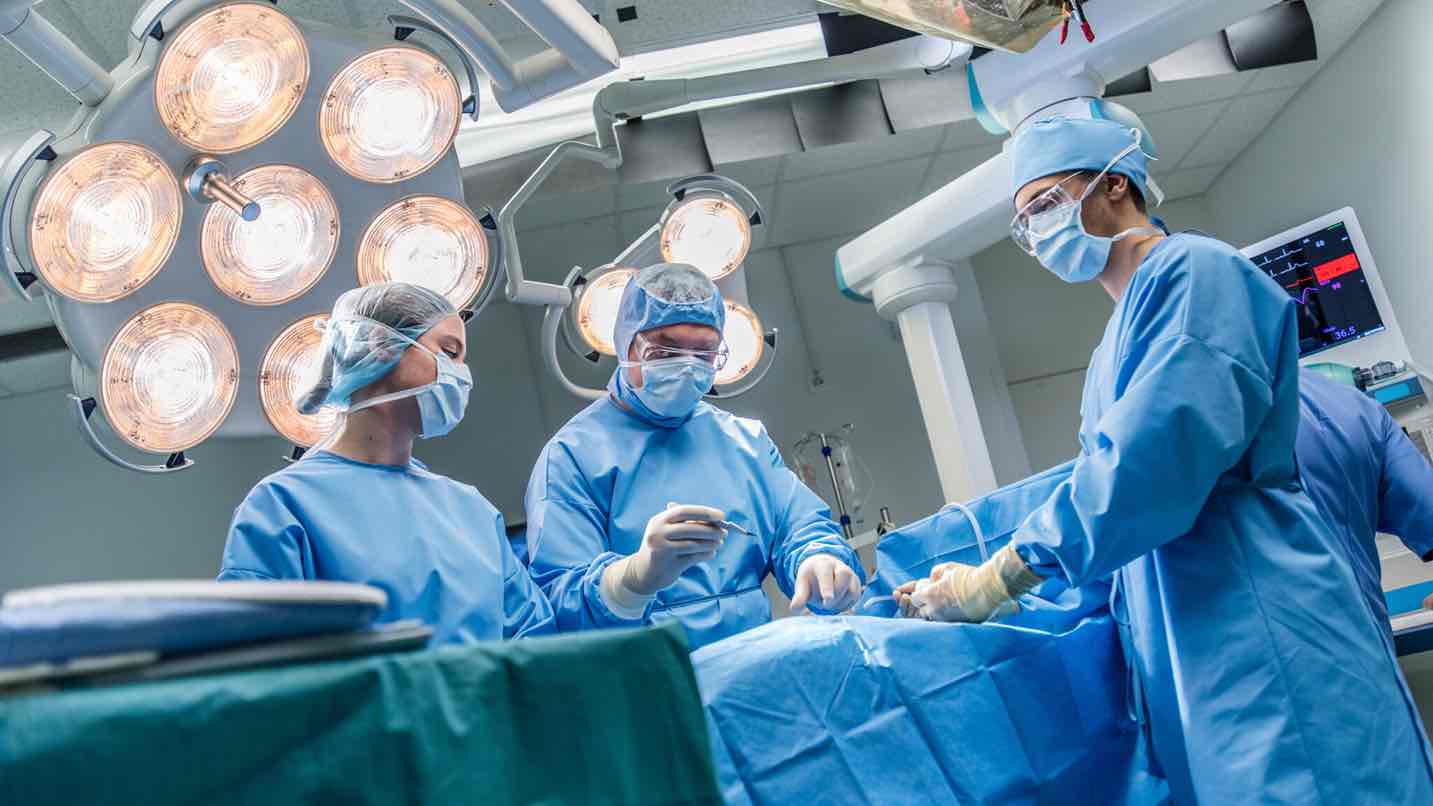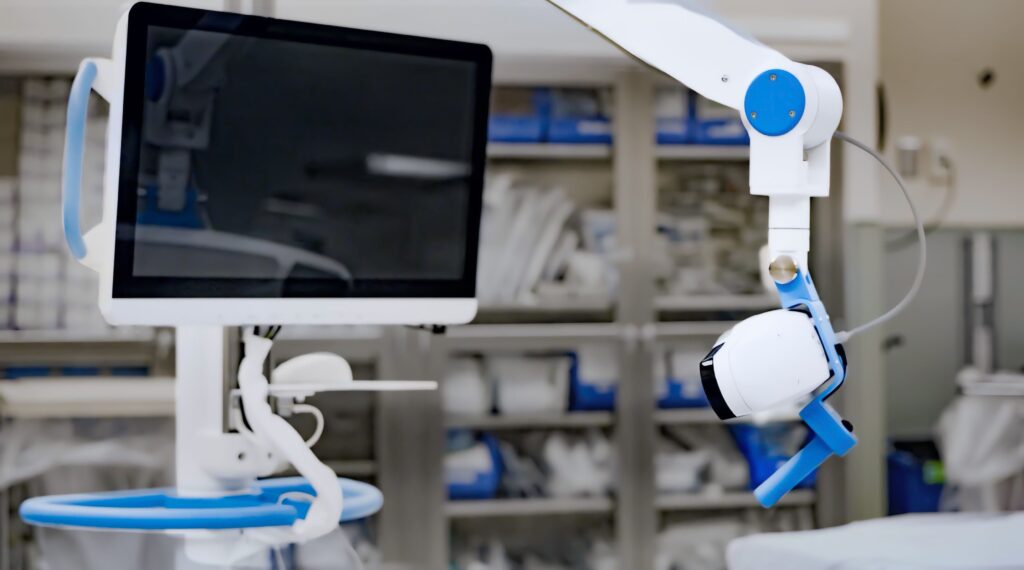Joint problems in the knees and hips can happen as we age, causing pain, limiting movement, and disrupting daily life. Joint replacement surgery can ease the pain and limitations caused by severe joint problems. The orthopedic surgeons at WMCHealth are at the cutting edge of advanced treatment techniques in joint replacements. We provide compassionate and expert care and have the necessary expertise to guide you to a life with less pain.
What Is a Joint Replacement?
A joint replacement is a surgical procedure to remove and replace part or all of a damaged joint. The joint is replaced with an artificial joint made of plastic, metal, or a combination of materials. The replacement joint enables movement after recovery without pain or restriction.

When Is Joint Replacement Needed?
Joint replacement is not the first line of treatment for joint problems. Bracing, physical therapy, and steroid injections are all optional treatments for joint conditions. You and your doctor will discuss if a partial or total joint replacement is needed for your condition.
Arthritis is the most common reason for joint replacements, but joints also wear down as we age. Many elderly people require knee or hip replacements due to wear and tear. In some cases, severe injuries or falls may also lead to the need for a joint replacement.
Types of Joint Replacements
The most common types of replacements are knee, hip, and shoulder replacements, but other joints can be replaced, including ankles, wrists, and fingers.
Depending on the severity of the joint damage, it’s possible to have either a total or partial joint replacement. A total joint replacement means all parts of the joint will be replaced, while a partial joint replacement means only the damaged part of the joint will be removed and replaced.
Why Choose WMCHealth?

WMCHealth takes a multidisciplinary approach to joint replacements, with a team that includes physical therapists, nursing staff, pain management professionals, and expert surgeons. Our full-team approach means that you can get full-service care all in one place, close to home.
WMCHealth’s Good Samaritan Hospital has earned The Joint Commission’s Gold Seal of Approval for Certification for Total Hip and Total Knee Replacement, while St. Anthony Community Hospital received the seal of approval for Total Hip, Total Knee, and Total Shoulder Replacement. Good Samaritan Hospital underwent a rigorous onsite review, during which The Joint Commission experts evaluated the hospital’s compliance with care standards around treatment and post-operative care.
The expert surgeons at WMCHealth have performed hundreds of these surgeries. They are skilled in traditional surgical methods and the latest in robotic-assisted surgeries, which allow for advanced precision, minimal invasion to soft tissue, and much faster recovery times.
Most patients are able to walk on the same day of surgery, returning to their lives, families, and homes with a new hip or knee.
Pain management is an important part of the joint replacement approach at WMCHealth. The multidisciplinary team includes experts in pain management who are trained in methods like mindfulness to help with pre- and post-operative discomfort.

Total Joint Replacement Education Classes
This informative and engaging session is designed to guide patients through every step of their joint replacement journey—from preparation before surgery to recovery and rehabilitation afterward. Whether you’re scheduled for a hip or knee replacement, this class will help you understand what to expect, how to prepare, and how to achieve the best possible outcome. Our experienced team will cover important topics such as preoperative planning, pain management, physical therapy, and post-surgery care, ensuring you feel confident and supported every step of the way.
Here’s a look at what you can learn:
- Pre-Admission Testing Day
- Pain Control and Medication Use
- Case Management
- Before Surgery
- What You Should and Shouldn’t Bring to the Hospital
- Day of Surgery
- Types of Surgery
- After Surgery
- Strength Exercises and Rehabilitation
Mindfulness For Pain Control, Healing and Stress Reduction
Mindfulness Meditation Practice Reported:
- Better pain control
- Reduction of severity of pain
- Less anxiety and tension
- Improved healing (four times faster)
Participate in a mindfulness meditation below:
Tips to prevent constipation with a high fiber diet
- Increase your fiber intake
- Found in whole grains, brown and long grain rice, fresh fruit and fresh vegetables, 25 gm = a high fiber diet
- Introduce high fiber foods slowly to your diet, so if your surgery is in two weeks to one month away, start now.
- Try to look for foods that have 4-5 gm or more of dietary fiber per serving
- Fiber loves water and drinking at least 8 glasses of water per day can help lessen constipation.
- Moving your body is also very important to prevent constipation after surgery, try to walk as much as you can.
- If you cannot move well after surgery, or cannot increase fiber enough, stool softeners or Psyllium powder like Metamucil or Benefiber can help.
- More information about foods and fiber levels
Physical and Occupational Therapy Exercises
It is important to be as fit as possible before undergoing a total joint replacement. This will make your recovery much faster. The exercises are shown below should be performed before and continue after your surgery. You should be able to do them in 15-20 minutes, and it is recommended that you do all of them twice a day. It is not harmful for you to do more. Consider this as a minimum amount of exercise prior to your surgery. Stop any exercises that are too painful.
Knee Replacement Exercises
Hip Replacement Exercises
Returning to Daily Activities at Home
- Ascending and Descending Stairs
- Car Transfer
- Putting On Your Sock and Taking It Off
- Putting On Your Pants After Knee Replacement Surgery
- Putting On Your Pants After Hip Replacement Surgery
- Precautions to Take After Your Hip Replacement Surgery
- Entering and Exiting the Tub/Shower
Robotic Technology for Total Knee Replacement
St. Anthony Community Hospital has a new way for surgeons to help keep you moving: Robotic-arm Assisted Joint Replacement.
Robotic-arm Assisted Joint Replacement Right for You?
Osteoarthritis Sufferers
Arthritis in the knee joint Osteoarthritis, the most common form of arthritis, is a wear-and-tear condition that destroys joint cartilage and bone. It typically develops after years of constant motion and pressure in the joints. As the cartilage continues to wear away, the joint becomes increasingly painful and difficult to move. If conservative treatment options fail to provide relief, your surgeon may recommend total knee replacement using ROSA Knee robotic technology.
